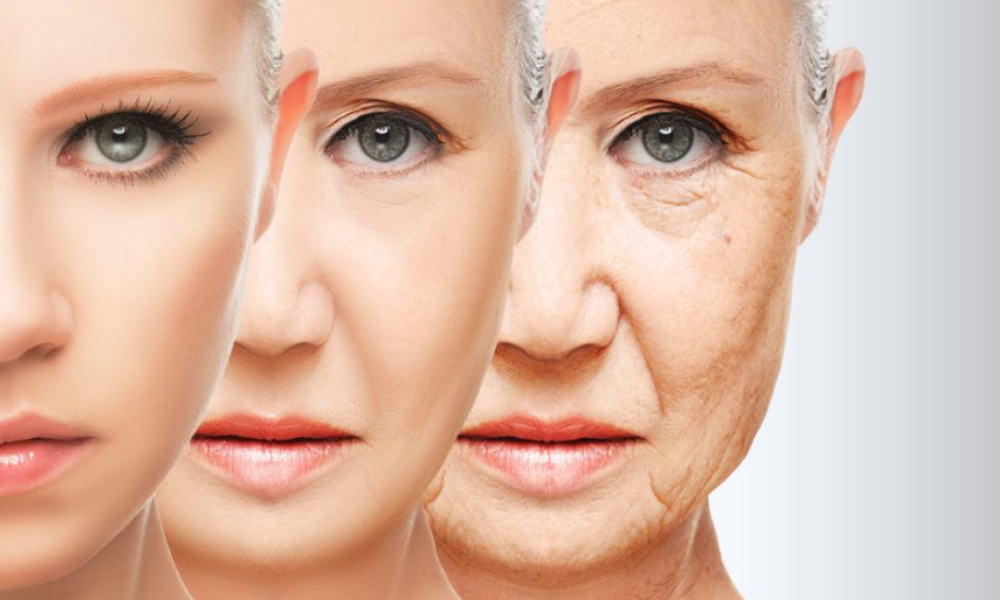Much of what we put on our bodies is absorbed through the skin and enters the bloodstream. Understanding how to read product labels is one of the first step in avoiding toxic skin care ingredients. The next step is replacing those ingredients with healthy and safe alternatives.
Skincare, cosmetics, and hair care products are all things that we use every day. From shampoo, conditioner, deodorant, makeup, and moisturizers the average person applies hundreds of synthetic chemicals to their body daily.
What’s even more alarming is that when a baby is born, they have already been exposed to approximately 200 chemicals1 and the CDC reports that the average person in the United States has at least 212 chemicals in their blood and urine2. These chemicals are not only applied to our skin, we are ingesting them in the water that we drink and bathe in as well.
How do we begin to remove these toxic chemicals from our home? We must become diligent in our effort to read product labels and uncover the truths behind some of the ingredients that are used in conventional cosmetic products. It’s not enough for a label to say, “all natural” or “plant based”. We must pay attention to what ingredients are being used.
Let’s look at 5 of the top offenders and their uses, plus discover healthy alternatives.
Parabens
Parabens are widely used in skin care and cosmetics as cheap preservatives to help produce a stable and lengthy shelf life. However, they can cause numerous health concerns including raising estrogen levels, increasing chance of cancer3 and allergic reactions.
Healthy ingredient alternatives: Benzyl Alcohol (and) Dehydroacetic Acid, Salicylic Acid, Sorbic Acid, Potassium Sorbet, Sodium Benzoate, Benzyl Alcohol (and) Dehydroacetic Acid, Naticide, Phytocide Aspen Bark, Phytocide Elderberry, NataPres, Leucidal Liquid and Amticide Coconut.
Synthetic Fragrance
This one is a bit tricky because there isn’t a law that requires companies to tell what ingredients make up the fragrance. Used extensively in skin care, these fragrance blends that we so often see on the back of labels can contribute to allergic reactions and respiratory illness4, not to mention the many symptoms that could be caused by the variety of chemicals that build in the body.
Healthy ingredient alternatives: Look for products that contain essential oils and botanical/fruit extracts and do not have “fragrance” listed on the ingredient label.
Phthalates
Phthalates5 are used as plasticizers to increase the flexibility and durability of plastics and are added to moisturizers, hairspray, lipstick, nail polish and perfumes to dissolve and coalesce ingredients and soften skin. They have been linked to reproductive problems, asthma, and even cancer. Phthalates can be difficult to identify on product labels but look for these ingredients:
- DBP (dibutyl phthalate)
- DINP (diisononyl phthalate)
- DEP (diethyl phthalate)
- DEHP (di-2-ethylhexyl phthalate)
- DMP (dimethyl phthalate)
- BBP (benzyl butyl phthalate)
- DNOP (di-n-octyl phthalate)
- DIDP (diisodecyl phthalate)
Healthy ingredient alternatives: Opt to purchase products that are packaged in recyclable glass instead of plastic and do not have any form of phthalates listed on the ingredient label.
Sodium Lauryl Sulfate/Sodium Laureth Sulfate
Sodium Lauryl Sulfate (SLS) and Sodium Laureth Sulfate (SLES)6 are most often found in toothpaste, mouthwashes, soaps, body washes, and shampoo. They function as a surfactant and emulsifier responsible for creating a thick foam and reducing the surface tension between oil and water (keeping ingredients from separating). While that foam seems nice and luxurious when we are using it, over time this chemical can accumulate in the body and may cause respiratory irritation, cataracts, psoriasis, and can also mimic estrogen in our body.
Healthy ingredient alternatives: castile soap-based products and products containing coco glucoside, decyl glucoside and Sodium lauryl glucose carboxylate.
Propylene Glycol
Propylene Glycol (also known as 1,2 propanediol) is a particularly disturbing ingredient because not only is it used as a moisturizer for skin, it also used in anti-freeze7, brake fluid, and paints. Another use is to prevent products from melting in high heat. The effects of long-term use include the possibility abnormalities of the liver, brain, and kidneys.
Healthy ingredient alternatives: propanediol is a natural moisturizer and emollient and is sustainable and renewable. It’s an EcoCert approved ingredient found in organic skin care formulations that has little potential for skin irritation. Vegetable glycerin is another alternative derived from soybean, coconut or palm oils.
This list of 5 toxic skin care ingredients and healthy alternatives are only a small portion of both the good and the bad. Hopefully this will help you begin to recognize which ingredients to begin eliminating from your skin care routine and what to look for in true all-natural products.
If you’re unsure whether ingredients are safe for personal use or to bring into your home, consult EWG’s Skin Deep Cosmetic Database. They have a product rating system based upon known hazards and side effects associated with toxic ingredients.
Blue Haven Holistics strives to produce only handcrafted and holistic products straight from Mother Nature and are packaged in recycled glass containers. Our products are tested on friends and family and never on animals. Our goal is to create high quality products that reconnect you with your own inner beauty.
Be happy, be healthy, be well!

References:
- https://www.ewg.org/research/body-burden-pollution-newborns
- https://www.cdc.gov/exposurereport/index.html
- https://www.naturalmedicinejournal.com/journal/2010-10/parabens-and-breast-cancer
- https://www.sciencedirect.com/science/article/pii/S1438463909000728
- https://www.ncbi.nlm.nih.gov/pmc/articles/PMC1241863/pdf/ehp0112-000331.pdf
- https://www.ewg.org/news/news-releases/2007/02/08/ewg-research-shows-22-percent-all-cosmetics-may-be-contaminated-cancer
- https://www.atsdr.cdc.gov/substances/toxsubstance.asp?toxid=240





